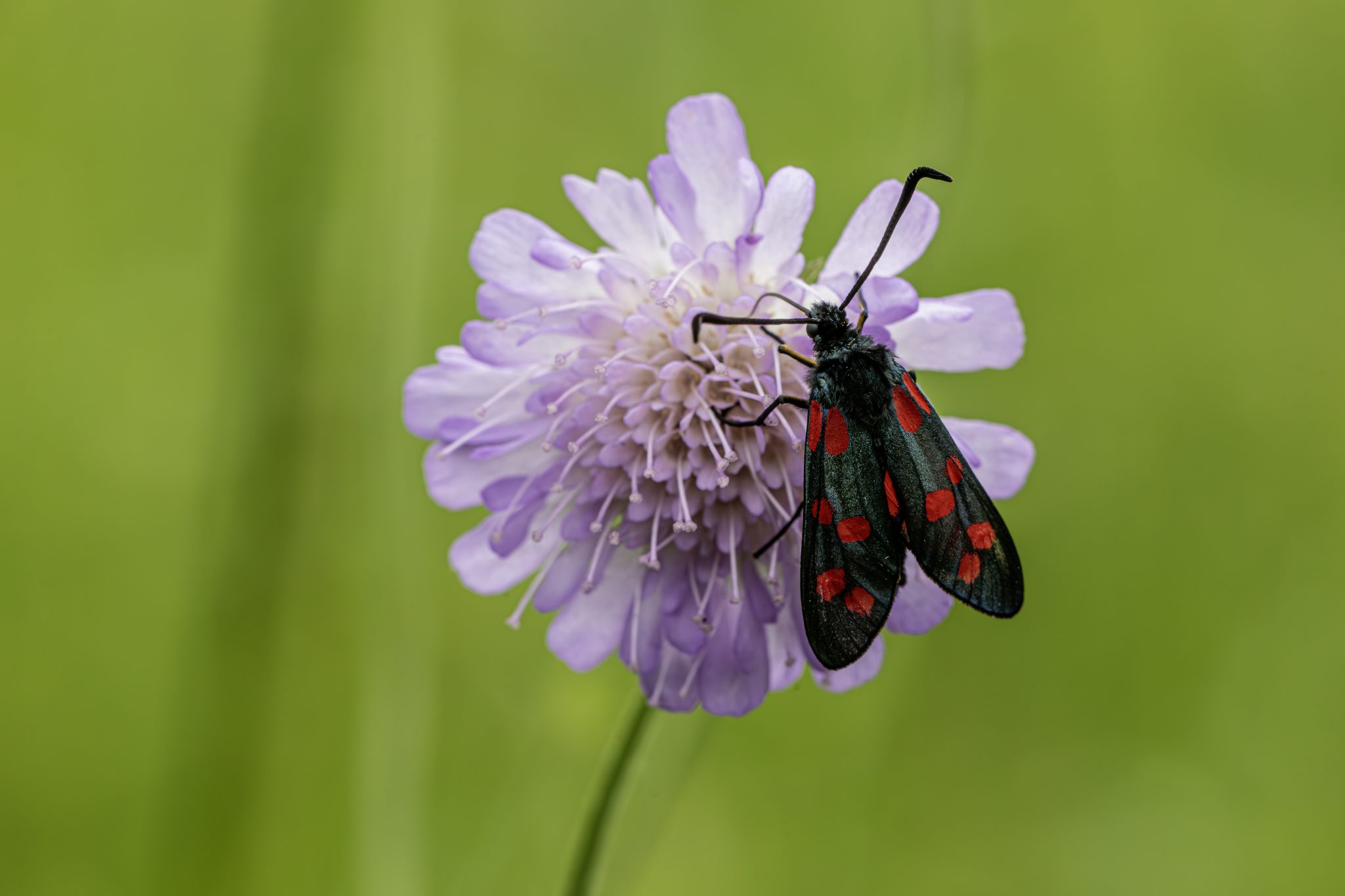Here’s a detailed overview of the Six-spot Burnet (Zygaena filipendulae) — one of Europe’s most striking day-flying moths:
🐞 Six-spot Burnet (Zygaena filipendulae)
🔹 Taxonomy
- Order: Lepidoptera (butterflies & moths)
- Family: Zygaenidae (Burnet moths)
- Genus: Zygaena
- Species: Z. filipendulae
- Authority: (Linnaeus, 1758)
🔹 Identification
- Wingspan: 30–40 mm
- Forewings: Glossy black or dark metallic green with six vivid red spots (sometimes fused or joined)
- Hindwings: Uniform red with a narrow black margin
- Body: Robust, hairy, black with a red collar beneath the head in worn individuals
- Flight: Slow, fluttering, but visibly day‑active (diurnal)
🔹 Distribution
- Widespread across:
- Europe (from Ireland to Russia)
- North Africa
- Western Asia
- Most common in temperate lowlands, rarer at altitude or in very dry Mediterranean zones
🔹 Habitat
- Flower-rich grasslands, meadows, coastal dunes, road verges, chalk downland
- Prefers warm, sheltered spots with abundant leguminous flowers
🔹 Life Cycle
🥚 Eggs
- Laid singly or in small batches on the underside of vetches, clovers, or bird’s-foot trefoil
🐛 Larvae (Caterpillars)
- Length ~20 mm when fully grown
- Pale green or yellow‑green with a series of black dorsal spots outlined in yellow
- Feed gregariously on host‑plant foliage from late summer into autumn
- Overwinter as half‑grown larvae in silken hibernacula
🐛 Pupae (Chrysalises)
- Form in a loose cocoon among grasses in spring
- Pupation lasts ~2–3 weeks
🦋 Adults
- Emerge June–August (earlier in the south)
- Nectar‑feeders on thistles, knapweeds, buttercups, bramble, scabious, etc.
🔹 Behavior & Defense
- Aposematic coloration: Red and black warn predators of their toxicity
- Cyanogenic glycosides in their bodies can release hydrogen cyanide if attacked
- Often bask with wings held open to display warning colors
🔹 Conservation Status
- IUCN: Not assessed globally, but locally common in suitable habitat
- Threats:
- Loss of flower‑rich meadows to intensive agriculture
- Overgrazing or undergrazing (both reduce host‑plant abundance)
- Conservation measures:
- Maintain and restore wildflower grasslands
- Leave field margins uncut until after caterpillar feeding season
🔹 Similar Species
- Narrow‑bordered Five‑spot Burnet (Z. lonicerae) – five rather than six spots, smaller size
- Forester moths (Family Zygaenidae: Adscita, Jordanita spp.) – metallic green forewings, narrower bodies, with 2–3 spots or none
🔹 Fun Facts
- They’re one of the few diurnal moths you’ll see regularly in sunshine
- Spot fusion can vary: some individuals show only 4–5 distinct red spots
- First described by Linnaeus in 1758, they remain a favourite of naturalists and photographers
📸 Observation Tips
- Visit flower-rich grassland on warm, sunny days (10 am–4 pm)
- Walk slowly along meadow edges and road verges—they’re often settled on thistles or knapweeds
- Best time to find larvae is late summer to early autumn on vetches and clovers
Visited 29 times, 1 visit(s) today
Views: 2289
Subscribe to the newsletter:
